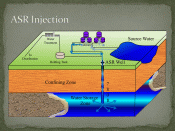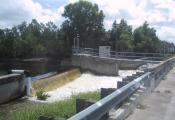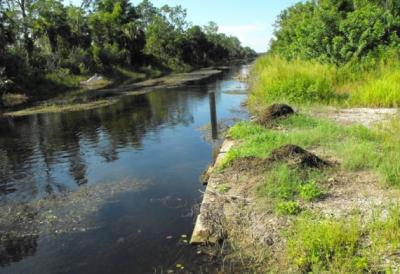Water Supplies
Water Supply
The City of Marco Island has four (4) water supply sources to meet the drinking water and irrigation demands of the community. All 4 water sources are considered "alternative" water supplies . Alternative water supplies are sustainable, nontraditional water sources, which include: stormwater, brackish ground water, reclaimed water, and Aquifer Storage & Recovery (ASR).
- Surface/Stormwater
Source Water Facility (SWF) – is located just North of US-41 along Collier Blvd. This facility is a 205-acre site that contains 2-lakes, that connect to a stormwater collection creek (Henderson Creek). The creek runs along the eastern part of the property. Approximately 90% of the creek water enters the City’s lakes through sidewall infiltration between the creek and the lakes. Additional creek water can enter the lakes through a direct connection that is controlled by a sluice gate. Approximately, 75% of the City’s potable water comes from this water source.
- Aquifer Storage and Recovery (ASR)
During the rainy season (typically mid-June to the end of November) Henderson Creek Canal (HCC), which borders the east side of the SWF, has a high inflow of stormwater runoff. Located at the SWF are seven (7) ASR wells. ASR wells allow the City to store fresh surface water underground, approximately 735 to 770 feet below grade. Correspondingly, bank infiltration from the HCC into the two lakes is sufficiently high during the rainy season, which allows the withdrawal from the two lakes to simultaneously meet the consumer demand of 6-mgd and 9-mgd to fill the ASR wellfield. The maximum realistic storage rate is 13.5 mgd.The ASR wellfield storage zone is between two clay layers, 730 to 780 feet below ground surface and the native water has a chloride content of about 2,900 ppm. The fresh water forms a bubble in the brackish water formation. The stored water (with a chloride content of 70 to 150 ppm) is maintained at about 1-billion gallons in a bubble shape with a diameter of about 4,000 ft. During the dry season, (December to June) the water elevation in the lakes is often low and it limits the water withdrawal rate. The additional flow (2 to 5 mgd) needed to meet consumer demand is made up by recovering water from the ASR wellfield.
- Brackish Raw Water Supply
The City's raw brackish water supply is treated by reverse osmosis (RO) membranes at the City's South Water Treatment Plant (SWTP). The facilities water is acquired by a Mid-Hawthorn aquifer brackish wellfield with 15 operating wells. The total capacity of the operating wells with the largest well out of service is 9.871 mgd, which is more than the 8.0 mgd needed to feed the SWTP and produce 6.0 mgd, its permitted capacity at 75% recovery of raw water, as RO permeate. The SWTP utilized high water pressure (350 psi) to force brackish raw water through RO membranes.
- Reclaimed Water
The City's reclaimed water is produced at the Reclaimed Water Production Facility and is regulated by FAC 62-610. The City's reuse water exceeds the minimum regulations for reuse quality water for "public access", which are the most stringent regulations for water reclamation. The City's wastewater operators are licensed professionals that continually monitor, sample and analyze the wastewater treatment process to ensure the reuse meets the highest standards.
Why Use Reclaimed Water?
Only 3% of the water on earth is freshwater and only 1% is available for human consumption. Reclaimed water is recognized as an outstanding, proven method of conserving fresh water supplies. As the demand for fresh water increases, the challenge for alternative water sources are needed to offset the current and future demands on potable water resources. By substituting reclaimed water for potable or groundwater sources used for irrigation, we are conserving freshwater resources in the area.Other approved uses for reclaimed water
- Street cleaning operations
- Ecosystem restoration
- Decorative fountains
Non-Approved Uses:
- Body-contact recreation
- Drinking or cooking
- Direct irrigation of edible crops/gardens that are not boiled or peeled prior to consumption (drip system irrigation ok)




Parks & Recreation Facebook MIPD Facebook
Fire Rescue Twitter
Parks & Recreation Twitter
Marco Island Police Twitter